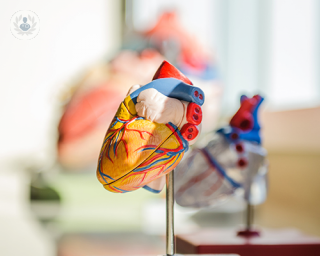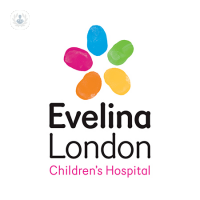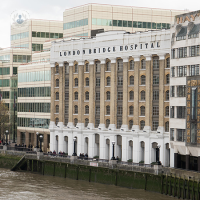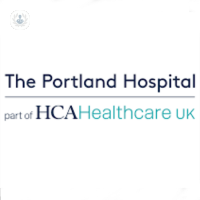Congenital heart disease
What is a congenital heart disease?
A congenital heart disease happens when there is a malformation of the heart or nearby vessels of the newborn or foetus. Some of these heart diseases don’t develop until months or years later.
In these cases we speak of a congenital heart defect, such as an underdeveloped heart, narrow blood vessels, leaking heart valves, or holes in the septa.

There are different types of heart defects, some are mild and only pose a mild health risk to the child’s health, and others may require urgent surgery.
Heart disease can be classed as:
- Heart diseases that obstruct the blood flow.
- Cyanogenic congenital heart diseases, where the blood flows from the pulmonary to the systemic circulation, delivering non-oxygenated blood to organs and tissues.
- Those that lead to short-circuits in the blood from systemic to pulmonary circulation. These include ventricular septal defect and atrial septal defects:
- Ventricular septal defect: where there is a hole in the link between both ventricles. This is the most common congenital heart disease. It may be asymptomatic and the hole may heal itself. If it continues to grow, it will pump too much blood into the lungs causing heart failure.
- Atrial septal defect: is a hole between the heart’s lower chambers that allow the blood to flow. The blood will flow from left to right, if there is too much blood in the right, the lungs will be pressed. Atrial septum defects don’t tend to cause problems, but they may sometimes cause hypertension, heart failure, and strokes.
- Tetralogy of Fallot: is a combination of different congenital abnormalities including; ventricular septal defect, pulmonary artery stenosis, and hypertrophy of the right ventricle. It prevents blood from reaching the lungs to oxygenate. This makes the baby turn blue. Surgical advances are making it easier to treat these issues.
- Long QT syndrome (LQTS): is a structural abnormality of the potassium and sodium channels of the heart. It can lead to arrhythmias that lead to syncope, seizures, and even sudden death.
- Short QT syndrome: is a genetic condition linked to atrial fibrillation. It has a shorter QT interval.
- Brugada syndrome: condition that causes an electrocardiographic abnormality. It is hereditary.
These heart diseases are all linked to sudden death syndrome.
Medical tests
Most congenital heart diseases can be detected by ultrasound before birth. These ultrasounds are routine procedures that monitor pregnancy progress as well as the mother and foetus health status.
There are some heart diseases that can only be detected after birth. If the heart disease is serious, this will be identified in the medical check-ups after birth.
Prognosis
As mentioned, there are different types of congenital heart diseases with varying seriousness. Some may be mild and spontaneously solve themselves while others may require immediate hospitalisation and surgery.
What causes it?
The causes for congenital heart disease remain unknown, although some risk factors have been identified:
- Hereditary causes: they could be part of some genetic or chromosomal syndromes such as Down’s syndrome, Marfan, Noonan, or Turner syndrome.
- Mother’s nutritional status: lacking iodine or folic acid, being overweight or having conditions such as diabetes are often related to foetal congenital anomalies according to the WHO (World Health Organization).
- Infections and toxic substances: consuming alcohol and smoking, some medications, and some conditions, such as rubella, can increase the chances of heart disease.
How can it be prevented?
There are primary preventive measures that can reduce the risk of heart diseases developing:
- Improve pregnancy diet with vitamins and minerals such as folic acid.
- Stop smoking and consuming alcoholic drinks when pregnant.
- Monitor blood sugar levels in pregnant ladies who have diabetes.
- Avoid exposure to toxic substances.
What is the treatment?
- Pharmaceutical treatment: this is used in the acute phase when the patient has had angina or a heart attack. This is for heart attacks where there is a blocked artery, which the medication aims to unclog. Medication used includes; acetylsalicylic acid (aspirin), antiplatelet medicines, anticoagulants, beta-blockers, nitroglycerin, thrombolytic or fibinolytic drugs, and painkillers.
- Surgical treatment: this is opted for in more serious cases or in cases where medications haven’t helped. The procedure used is artery surgery and could be; angioplasty or percutaneous revascularisation, coronary bypass surgery, or a bypass.
- Long-term treatment: this involves making changes to the patient’s lifestyle. Stop smoking, only consume alcohol in moderation, have a balanced diet, exercise regularly, keep an eye on risk factors, and relax.
What specialist should I see?
Babies and children with congenital heart issues are diagnosed and treated by a paediatric cardiologist. If surgery is needed, this will be performed by a cardiac or cardiovascular surgeon.
















